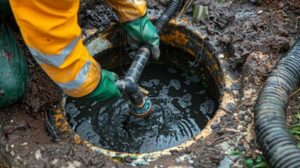A great haircut can boost your self-esteem and change how you carry yourself in the world. Stylists at salons are well aware of how a person’s look can affect their confidence and mood.

The serene ambiance of a hair salon allows clients to relax and escape from their daily stressors. Adding therapeutic treatments like scalp massages to your appointment can further enhance the experience. Contact Hair Salons San Francisco for professional help.
Personalized salon services are a growing demand from clients, as they want to feel like their specific needs are heard and met. Whether it’s offering a wide selection of beverage options, having multiple styling techniques available for a client, or simply remembering key details from past visits, salon owners are finding creative ways to deliver an exceptional and unique experience.
Using advanced tools, including digital consultations and color-matching software, stylists are able to provide a highly customized service that caters to each client’s unique needs and preferences. The foundation of this is the consultation process, in which stylists take the time to listen to clients and understand their concerns. The result is a tailored experience that enhances the results of the treatment and improves the client’s overall look.
Aside from delivering unparalleled service, professional hair salons also have access to quality products that are not readily available in stores. These high-end beauty products are designed with superior formulations that can make a big difference in the health and appearance of the hair and skin. Salon professionals are also trained to properly use these products, ensuring that the right amount and type of product is used for optimum effectiveness.
Regular salon visits can also save clients a lot of time and hassle, by helping to maintain the health and appearance of their hair and skin. For example, a keratin treatment can smooth the hair shaft, leaving it shiny and smooth for up to six months, while deep conditioning treatments can provide intense moisture and nourishment, improving the condition of dry and damaged hair.
In addition, regular salon visits can help to reduce stress, with the soothing ambiance and pampering services providing a much-needed escape from the everyday stresses of life. With all of these benefits, it is no wonder that more and more people are turning to salons for their hair and beauty needs. As the demand for personalized care continues to grow, salons must continue to stay ahead of the curve by embracing technology, innovation, and client-focused care. Salons that offer personalized solutions will not only see a boost in their clientele, but will also be able to set themselves apart from the competition.
Enhanced Confidence
A good haircut or beauty treatment can have a significant impact on your confidence. When you walk out of a salon looking and feeling your best, it boosts your self-esteem and positively impacts how you interact with others. It’s also important to remember that hair salons serve as social hubs, providing a space where you can connect with other patrons and build meaningful relationships.
In addition to the confidence-boosting benefits of a new look, salons provide expert advice on hair care and maintenance techniques that can help you maintain your salon-worthy appearance between visits. These tips and tricks can help you achieve long-lasting results from your salon services and minimize damage. In addition, some salons offer specialized products to combat specific hair concerns, including dryness, brittleness, and split ends.
Regular salon visits are essential for maintaining healthy skin, hair, and nails, which contribute to your overall health and well-being. By prioritizing self-care through salon visits, you can ensure that your skin, hair, and nails are in tip-top shape for a healthy, radiant you.
When you’re surrounded by soothing music, the gentle hum of hair dryers, and the soft chatter of other salon-goers, it’s hard not to feel relaxed. These moments of physical relaxation and emotional rejuvenation can help you better manage stress and anxiety, promoting mental health and wellness.
Another benefit of salons is that they offer consistent results. Your hair or nail color will stay vibrant and your haircut will remain in place, even between appointments, because salon professionals have the skills and training to achieve high-quality, reliable results. This consistency is difficult to replicate at home and is one of the main reasons people continue to visit salons for beauty and hair care services.
In addition, many salons prioritize sustainability and support environmentally responsible practices. By choosing a green salon, you can contribute to the wellbeing of your community while enjoying top-quality beauty and hair care services. When you’re a regular client at a sustainable salon, you can enjoy exclusive perks and discounts that contribute to your overall satisfaction. This loyalty program rewards your continued business and helps to keep your salon experience affordable and rewarding.
Peace of Mind
A great haircut can do wonders for your self-esteem, and regular salon visits can provide a consistent source of confidence and happiness. In addition, professional stylists can teach you how to maintain your new look between appointments, ensuring that you always feel ready to face the world with your best self.
Furthermore, visiting a beauty salon is a great way to relax and unplug from the stresses of everyday life. The soothing ambiance, pleasant scents, and gentle massage during treatments all work together to alleviate stress, leaving you feeling rejuvenated.
Salons also promote mindfulness by encouraging you to focus on the present moment and enjoy your experience. This is important for your mental health, as it allows you to develop a more positive outlook and foster resilience against the stresses of daily life.
Beauty salons are also a great place to socialize and build relationships with other patrons. The comradery cultivated through these interactions can help you combat isolation and depression while providing a sense of community. Furthermore, social interaction is an essential element of healthy self-esteem and emotional well-being.
Additionally, when you visit a high-quality hair salon, you can rest assured that you are supporting local businesses and the livelihoods of skilled beauty professionals. Moreover, most salons offer product guarantees and education to ensure that you are using the products properly. This can help you avoid costly mistakes and achieve the desired results.
In addition to these benefits, salons often offer a variety of services that can enhance your physical appearance. Whether it is an eyebrow wax, a hair color treatment, or a manicure and pedicure, these treatments can make you look and feel your best. However, it is important to avoid materialism when purchasing these products as it can lead to stress and anxiety. Instead, try to find a balance between buying and not spending too much money on personal care. Ideally, you should invest in quality over quantity when it comes to beauty products. This will allow you to reap the full benefits of your investment and keep your budget in check.
Relaxation
Hair salons are more than just beauty destinations, they provide a number of health and wellness benefits. From boosting self-esteem to improving mental wellbeing, salon visits can significantly improve your overall well-being.
At the best salons, you’ll find that customers enjoy personalized services and an inviting environment that contributes to a relaxing experience. With experienced stylists and high-quality products, you’ll get a professional look that will leave you feeling confident and satisfied.
A top-rated hair salon located in western Bergen County is a popular choice for many clients due to its exceptional customer service and extensive range of care options. The team of highly-trained and experienced stylists is able to offer unparalleled results for every client. They understand that each person has a unique vision of their ideal style and strive to achieve the desired results. This is one of the reasons why a consultation holds such a crucial role in a successful salon appointment.
The salon also offers a wide selection of care products, including shampoos, conditioners, styling gels and sprays, special hair treatments, highlighting products and tools. They are formulated to nourish and protect your hair so that it looks healthy and vibrant.
Many of these products are available in a variety of scents, which add to the salon’s atmosphere and help you relax during your appointment. They are also formulated with natural ingredients that won’t irritate your scalp or cause allergic reactions.
Hair salons offer a number of specialized beauty treatments, such as keratin smoothing and hair relaxing. The former is a hair straightening procedure that removes the curls from your strands and leaves them with a sleek, smooth appearance. The latter is a hair relaxing treatment that alters your natural hair texture to loosen and smooth the curls for a more relaxed look.
Upscale salons also stay up-to-date on the latest trends and styles, so that you can express your individuality through your hairstyle. For example, balayage and ombre are popular coloring techniques that create a natural-looking sun-kissed effect. And, lobs and pixie cuts are trendy haircuts that offer a unique look for any length of hair.


